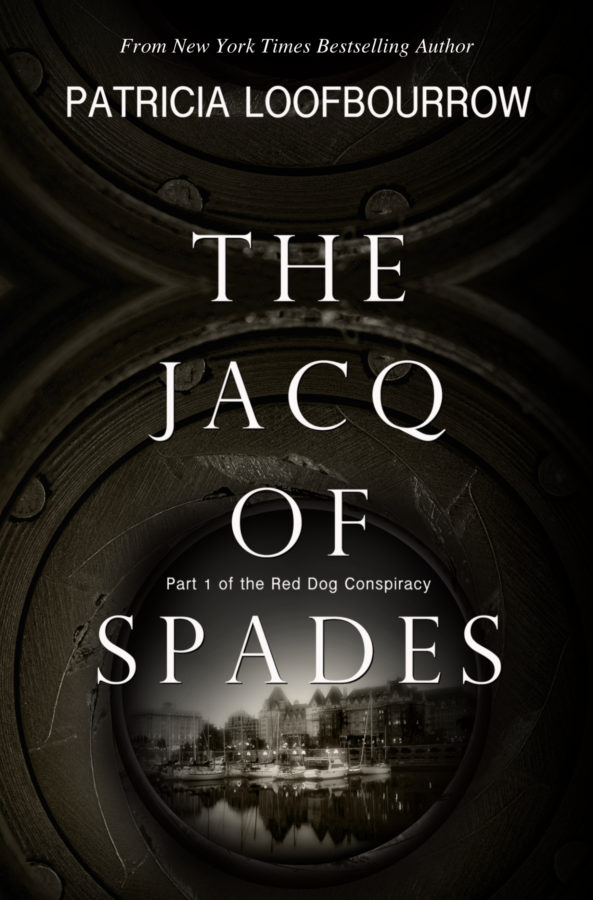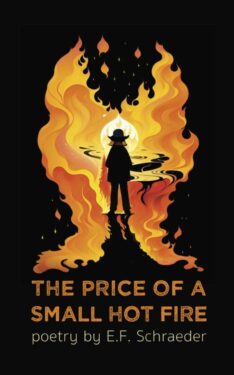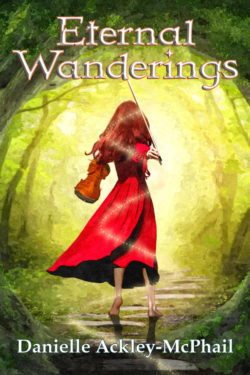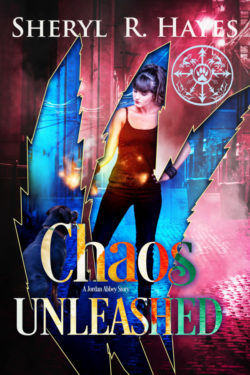by

- Gutshot: The Catastrophe
- The Alcatraz Coup
- The Jacq of Spades: Part 1 of the Red Dog Conspiracy
- The Queen of Diamonds: Part 2 of the Red Dog Conspiracy
- The Ace of Clubs: Part 3 of the Red Dog Conspiracy
- The King of Hearts: Part 4 of the Red Dog Conspiracy
- The Ten of Spades: Part 5 of the Red Dog Conspiracy
- The Five of Diamonds: Part 6 of the Red Dog Conspiracy
- The Two of Hearts
- The Three of Spades
- The Knave of Hearts
- The Four of Clubs
- The Jack of Diamonds
- Brothers
- Red Dog Conspiracy Act 1
- Vulnerable
- Red Dog Conspiracy Act 2A
The once-beautiful domed neo-Victorian city of Bridges is split between four crime families in an uneasy cease-fire. Social disparity increasing and its steam-driven infrastructure failing, a new faction is on the rise: the Red Dogs.
Jacqueline Spadros has a dream life: a wealthy husband, a powerful family. But her life is not what it seems. Kidnapped from her mother's brothel and forced to marry, the murder of her best friend Air ten years before haunts her nightmares. She finds moments of freedom in a small-time private eye business, which she hides in fear of her sadistic father-in-law.
Air's little brother disappears off his back porch and the Red Dogs are framed for it. With the help of a mysterious gentleman investigator hired by the Red Dogs to learn the truth, Jacqui pushes her abilities to their limits in hope of rescuing the child before the kidnapper disposes of him.
SALE!
- Jun 23 - Jun 30: Kobo Free Page - Diverse Stories promotion at Kobo
Editors:
Cover Artists:
Genres:
Tropes: Abandoned Place, Antihero, Conspiracy, Dystopian Governments, Fish Out of Water, Found Family, Mad Scientist, Reluctant Hero
Word Count: 75000
Setting: Far future North America
Languages Available: English
Series Type: Continuous / Same Characters
Tropes: Abandoned Place, Antihero, Conspiracy, Dystopian Governments, Fish Out of Water, Found Family, Mad Scientist, Reluctant Hero
Word Count: 75000
Setting: Far future North America
Languages Available: English
Series Type: Continuous / Same Characters
Lilyn G on SciFi and Scary wrote:Strong world-building drives this tale of organized crime families, differentiated by the suits of a card deck: Spadros, Diamond, Hart, and Clubb. To slip out of the stringent social order, Jacqueline Spadros spends time with her dressmaker, supposedly having gowns created -- but in reality she slips into other disguises to move freely and solve crimes, such as the disappearance of a young boy named David Bryce. David's disappearance is connected to a much wider web of intrigue, reaching into Jacqueline's past. World-building, setting, and touches of steampunk help a sometimes convoluted plot and a few dangling story lines that might be developed in upcoming volumes of the series. An intriguing start and interesting premise.
Margaret Fisk on Tales to Tide You Over wrote:In The Jacq of Spades Patricia Loofbourrow manages to spin a tale that keeps you guessing right up until the very end. There was always just enough uncertainty about clues to keep you slightly off-balance and make you doubt your conclusions. Add in the fact that the main character is an intelligent, strong woman who could drink more than a few men under the table, and you have a story that is almost irresistible.
Now, this novel is technically Steampunk, but its not heavily mentioned. There aren't a lot of cool gadgets mentioned, but there's talk of Inventors and the mechanisms that make the city work. I won't go into too much detail, just felt it was best to let the readers know that this wasn't a heavily fantastical story. This lack of obvious 'punkery does nothing bad to the story, though. Its mentioned at the appropriate moments, but you don't spend your time ooh'ing and aah'ing over gizmos because you're completely wrapped up in the mystery that's unfolding.
The Jacq of Spades hooked me immediately, almost against my will, and pushed me through a story that both captivated and puzzled me. I don't even have any major critiques worth mentioning in this review. That should tell you something.
E.G. Stone on Fantasy Sci-Fi Focus wrote:The Jacq of Spades offers a rich, complex culture with a mix of post-apocalyptic and noir themes. From the beginning, the reader is thrust into the layers of existence Jacqui maintains between her public position as wife to the heir of the Spadros family, one of the leading families on their island, and her private work as a detective.
The story is told in first person and builds from two ends at the same time. Jacqui’s memories add in pieces of information to show the tangled line she walks as her past comes to confront her present when she’s called upon to investigate the kidnapping of her best friend’s younger brother. Not her modern, good-side-of-town best friend, but the street rat companion of her youth in the Pot, what passes for a slum in the domed city of Bridges.
I found the characters intriguing and the environments full of lovely details. That Jacqui lives on the edge, unsure of whom she can trust and knowing the very actions she undertakes to win possible security could condemn her is very clear. While not heavily steampunk in nature, the influence of the Victorian aesthetic is noticeable, and that each family has an inventor, somewhat of a mad scientist, is revealed right up front. However, that aspect of the world is not the main focus in this, the beginning of a larger tale.
I’ve mentioned before how I tend not to read mysteries. This book reminds me of why. While it’s stated up front that this is part one, between the main character’s ignorance and the first person narrative, the layering of clues and evidence sometimes felt more given than discovered to me. She definitely breaks the rules of her society and goes into situations a woman of her now stature has no business being in, which offers up some solid tension in the story. Ultimately, though, I didn’t feel much was resolved, and the one bit of answer Jacqui does manage comes without the detail to make it feel real.
I have a theory about the Red Dog Conspiracy and the mystery behind all this, but lack the evidence to prove or disprove it. My guess is the mystery will continue in the next book, and yes, the specific case technically does conclude, so others might have no issue, but as a reader I was left dissatisfied by this aspect.
I’m not much for pomp over substance as a reader, and clearly, the state of the mystery left me frustrated, but I enjoyed my time in Bridges and with Jacqui. There are several story threads that draw me on to the next book in the series because of the curiosity they’ve provoked, and the question of where Jacqui can find true allies is a major part of that.
For rich pageantry and a complex culture navigated by a character who feels she’s balanced on the edge between the slums of the Pot and the extravagance of the families, The Jacq of Spades is a hands-down success. I felt folded into their culture from the start, and it definitely pushes the noir buttons well.
The bridge (if you’ll allow me a moment of humor) to the next book promises a deeper look into the steampunk elements and warps this world from stagnant stability in a time of crisis to a desperate need for change. There’s a lot that intrigues in the first novel, and I suspect the next will have that and more.
I am both picky and demanding where mystery comes into play. That the mystery/detective elements did not live up to my standards, therefore, may not reflect the experience of other readers. The world building and characters, however, delighted me and while I might not have picked up the book knowing what I know now, I would have missed out on a fascinating culture that touches on the status of women and social differences through the eyes of someone both within and standing as an outsider to this world.
While Jacqui’s aims might not be what the Spadros family had hoped, she’s the perfect foil for the brutal man who runs the family. She has much to learn about the nature of her relationship with her husband through the course of the book as well, things that will both surprise her and cause Jacqui to rethink some of her assumptions. There is much good to counterbalance my issues, and while I would have expected a solid conclusion to the first part of the mystery, it is the beginning of a series and therefore the answer I seek is still to come. I do not regret opening the pages of this book one bit.
While fantasy, science fiction, and their subgenres are no stranger to mystery, it is a fairly rare occurrence to see them combined with noir. So when Patty Loofbourrow told me that her steampunk book, Jacq of Spades was also a noir, I was intrigued. Noir has its own special requirements, some of the most important of which include the fact that our hero is definitely not a hero. The protagonist is an outsider in the world in which they find themselves. And this world, make no mistake, is crumbling. Noir fiction focuses on the often fatalistic idea that the good guys rarely win. Things are darker than they appear and that darkness is ever encroaching. However, our protagonist is not necessarily fighting against this darkness, as many mystery-solvers—even the ones in the speculative fiction genres—are, but is merely trying to survive it.
This, I thought, would be very interesting. A lot of fantasy and science fiction is very much about the “good guy” standing up against the “bad guy” and trying to improve the world. Jacq of Spades, though, has all the elements that you would expect from a steampunk novel. Worldbuilding. Stunning technology. Characters and a society straight out of Victorian England. Make no mistake, though. It is noir through and through.
The world in which we find ourselves is Bridges, a domed city that is divided into four quadrants, each ruled by a crime family. Our main character is Jacqueline, the wife of the heir to the Spadros family. She was an outsider, raised in what equates to the slums, and groomed to be the perfect wife for the Spadros heir. Jacquie, though, is a bit of a rebel. She goes off to the dressmaker and, when no one is looking, solves mysteries. Usually small ones, until she is requested to investigate a missing child.
Things spiral quickly into darkness, with our main character—an anti-hero if ever I saw one, yet with all the sass of a femme fatale—drawn into scandal, secrets, and conspiracies.
This book is not at all what I expected. I haven’t read noir fiction in a long time, so I half believed that this would be overwhelmed by the mystery. It was not. Instead, we are drawn into a world that is creatively built. We discover the world through the thoughts of our narrator, the main character (incidentally, noir is often first-person, but that’s besides the point) and she does a wonderfully imperfect job of seeing things. We are tantalised with tidbits that are probably very important, but not really touched on more than once or twice. The prose is individual and flows well, making Jacqueline pop off the page. And the worldbuilding itself is exactly what I would expect of a steampunk novel, with one exception: the drawbacks of Victorian society are purposefully mentioned.
As far as the mystery goes, it is very interesting. This has the feeling of an epic fantasy, where the tiny details turn out to be incredibly important in a world-changing sort of way. However, in true mystery fashion, those threads are woven together to form a picture that our protagonist must solve. She doesn’t, necessarily, gather all the pieces to put everything together, but this is only book one.
As a steampunk book, this one is a great example. The technology is precisely what you would expect. Steampunk novels, technology aside, also tend to be a bit more romantic than your average science-fiction or fantasy novel. And by romantic, I do not mean romance, though that may be a factor. I mean the Romanticists, like Byron or Keats, who focus on the world around them (usually with nature, though in steampunk this is technology) and have a more singular devotion to the essential thoughts and pieces that make up humankind. It is a little nostalgic, though this is not a complete description. Jacq of Spades is nostalgic, but not for the Victorian era. It is nostalgic for the things lost in childhood, for innocence. This, combined with the technology, make a singular impression on noir fiction.
My main critique for this work is that the internal monologue was a bit difficult to understand at times, particularly when Mrs. Spadros jumped through time in her thoughts. However, this is part of what makes the story so intriguing; we don’t know everything and must piece the important pieces together. I would suggest a slightly tighter focus on verbs when referring to or jumping from a different time.
Overall, I would say that this story is incredibly well done. It takes a look at the darker side of life without necessarily crossing the line into dark fantasy/sci-fi. The combination of noir and steampunk is not one that I would have expected, but it works quite well to create a story that is in-depth and interesting. As a reader, I really enjoy learning about the world and the characters. As a writer, I greatly appreciate the deft combination of genres that, on the surface, would not fit together. This book is well written and I enjoyed the adventure. I look forwards to more books from this series (of which I understand there are many).
First in a 13 part far future steampunk noir series.






